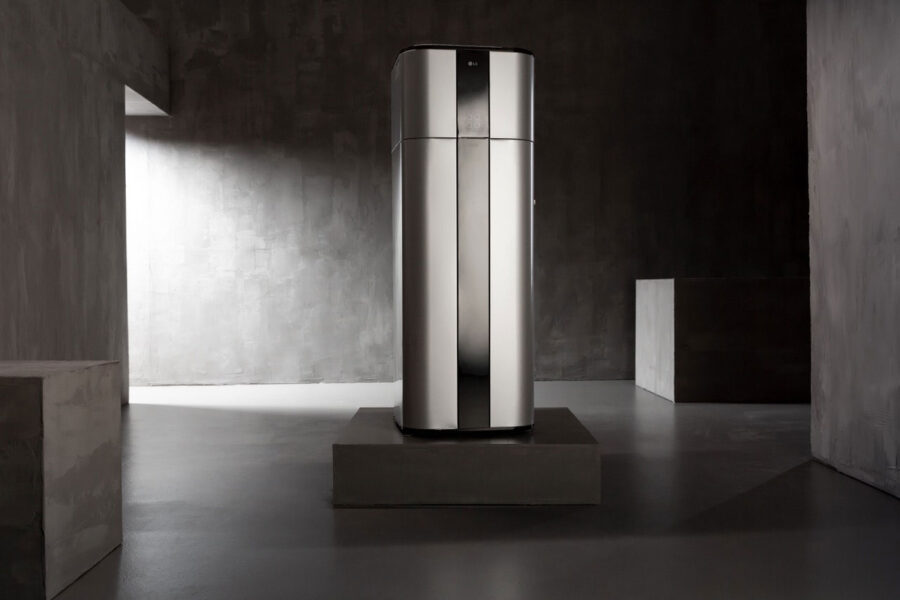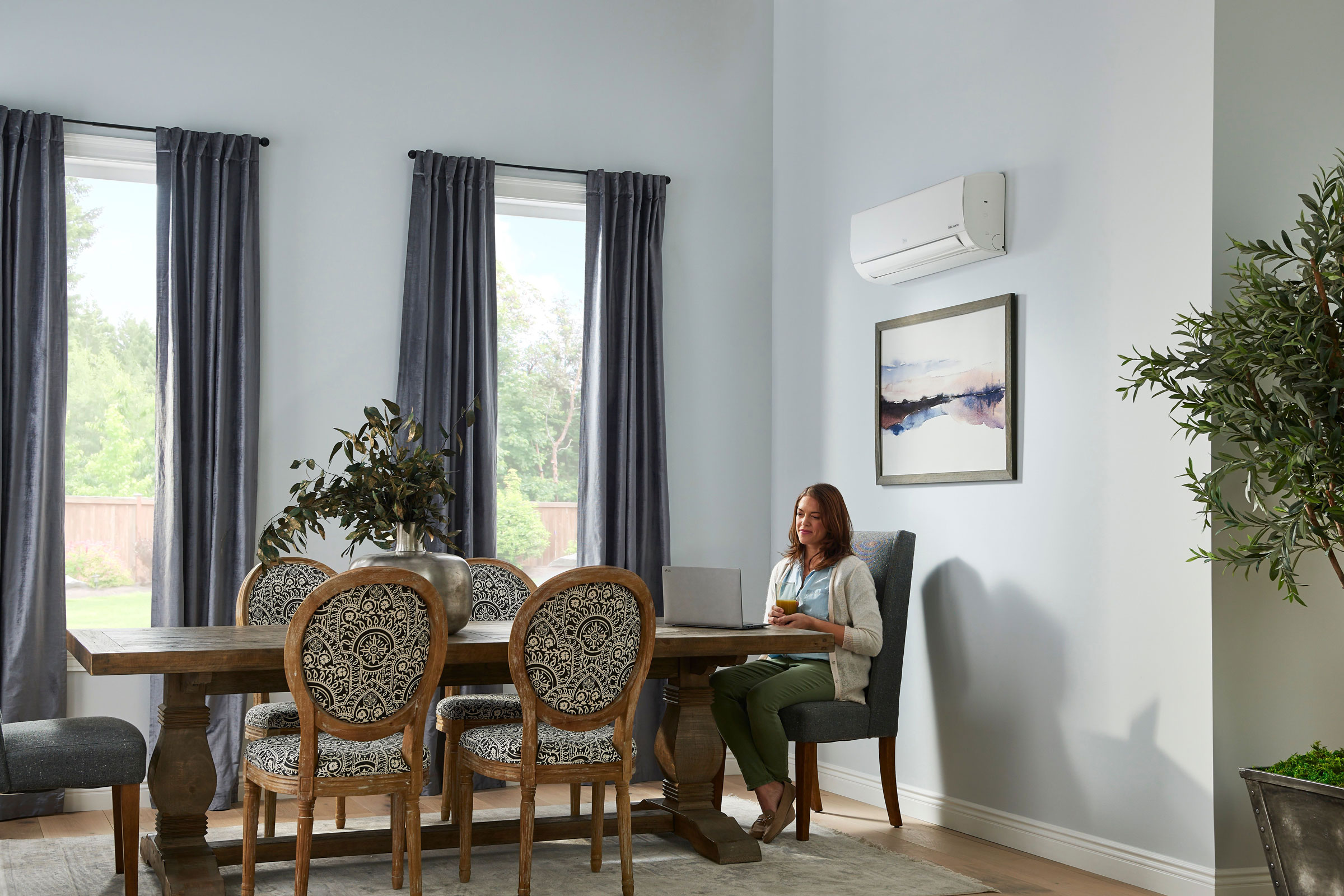Story at a glance:
- Inverter driven heat pumps provide more efficient, electrically based heating and cooling, even in colder climates, allowing owners to take advantage of heat pump performance for cleaner and reliable heating.
- Multi-zone heat pumps allow for individual rooms to be set at different temperatures, boosting occupant comfort while providing savings on utility bills.
- Hot water heaters can benefit from heat pump technology, too, providing hot water with up to 70% less energy, which ultimately saves consumers in energy costs.
Imagine living in a house where all rooms are heated equally, and unoccupied rooms don’t have to be heated when not in use. Inverter driven heat pump technology, in which a single heating/cooling system draws energy from the outdoors and moves it inside without using oil or gas to produce heat for the home, makes this a possibility.
It’s a vast improvement over traditional HVAC. “This solves our oldest problem in the trade: Why heat or cool areas in the home to the same temperature if there’s no one there?” says Terry Frisenda, executive sales manager at LG Electronics USA’s Air Conditioning Technologies Division.
With an array of new products utilizing inverter heat pump technology, LG is taking heating and cooling to the next level and offering equipment that can manage each room’s temperature automatically in an energy-efficient and cost-effective package.
Growing Demand Across the US

Photo courtesy of LG Electronics USA
Heat pumps have long been more common in the southern part of the US, as heating demands there tended to be milder. That said, this technology has been around in some format for a long time and every US HVAC manufacturer produces heat pumps in their line-ups.
Instead of installing cooling only and heating only products that operate at different times of year, you can install a heat pump that is perfectly suited to climate in the South, where heating needs rarely dip below 30 degrees. In parts of Europe and Asia, much colder climates have also been making use of technologically advanced heat pumps that are designed to perform at much colder temperatures while maintaining the same or better energy efficiency than oil- or gas-powered heaters. Called Cold Climate Heat Pumps (CCHPs), these utilize an inverter driven compressor and engineered components to capture available heat and deliver it indoors at once unheard of ambient temperatures. It’s no longer a “Southern only product.”
Why have other continents been earlier adopters than the US? “Power costs more in the rest of the world,” Frisenda says. “But we’re reaching a point where power is getting expensive here, too.” An industry expert with more than 40 years of experience, Frisenda sees the trends of the rising cost of power dovetailing with growing concerns about fossil fuels as even more evidence that the time of the inverter heat pump is here.
How Heat Pumps Work
In the simplest of explanations, heat pumps reverse the flow of refrigerant and essentially move heat from one location to another. If you think about your central air running in the summer, when you walk outside and feel the air coming off the top of the unit it’s very warm, if not hot. In the cooling mode it’s moving the heat from your home to outdoors. Now switch to heat mode and the refrigerant reverses; that hot air is now being moved to inside your home. There certainly is more to the science, but that briefly explains the principle.
The LG Heat Pump Multi F MAX with LGRED°, a cold climate heat pump, can connect up to eight individual indoor units that can be set at different temperatures. The outdoor unit compressor modulates its electrical characteristics depending on usage and heat available in the air outside. When demand is less the heat pump adjusts and only uses the power required to meet the desired temperature of the space. When the demand increases the heat pump has the ability to increase and meet the need when properly sized and installed. “That’s when the savings really start piling up,” Frisenda says.
This means that, even with varying temperature controls for different rooms, the heat pump operates at greater efficiency than a traditional fossil-fuel reliant system. The LGRED° (which stands for LG Reliable to Extreme Degrees) three-ton inverter heat pump only requires 40 amps of electric service, for example, compared with a traditional US product that would require 90 amps. “It is incredibly efficient and cost-effective,” Frisenda says. “It requires as much as half the power of a traditional system, and it’s designed to perform at -13 degrees Fahrenheit and below.”
Adoption in US Markets
For all its merits the US market has been slower to adopt inverter heat pump technologies than other global markets. “The HVAC trade has habits and traditions that are very well-established and that have held back the growth of this technology,” Frisenda says. “Some of the resistance in the trade is based off early experiences with first generation heat pumps.” They were not designed to perform at low temperatures and required electric resistant heaters to “back up” the heat pump on those cold days. They were expensive to operate in those conditions and left many with a negative outlook on the technology.
Ductwork, for example, is a hallmark of American heating and cooling. Adding inverter heat pump products has helped address this issue and allows the products to easily integrate with ducted spaces. “It has really increased acceptance from the trade,” Frisenda says.
Part of the resistance from the trade has been fear of service and technical support, according to Frisenda. If the unit needs service an LG app, used in conjunction with the product manual, aids licensed contractors in troubleshooting with images, error codes, questions, and suggested next steps.
The savings associated with heat pump units starts way before the installation of the heat pump, though. While the unit itself might be a bit of an investment upfront, a heat pump allows construction to bypass installing gas lines and other fossil fuel infrastructure, resulting in a reduction of the project’s overall cost. “If I’m building 300 homes and I eliminate all the gas piping and all the venting and everything associated with installing gas in the neighborhood, I’m reducing the cost of construction,” Frisenda says.
Hot Water Heating Benefits, Too

Photo courtesy of LG Electronics USA
Heat pumps can be used to maintain hot water tanks, too, and they work in approximately the same fashion as a heating or cooling system. When the LG Inverter Heat Pump Water Heater—a newer product LG is rolling out in the US this spring—is idle (no one needs hot water at the moment), the system slows down its electrical compressor, maintaining a nice, even water temperature of the occupant’s choosing. This means there is no waiting for hot water to heat up for a morning shower.
Compared to traditional systems, the hot water heater is a sleek and shiny black stainless unit, and stores 58 gallons of water. “It’s beautiful,” Frisenda says. And it uses less energy than electric resistant water heaters, which results in cost saving benefits and energy savings of as much as 70%.
As building envelopes have become more efficient with better sealed doors, glazing, and insulation, the capacity needs of heating and cooling units have been decreasing. Frisenda says that means the big HVAC systems of yesteryear may not be necessary in the same way they were a few decades ago. As BTU demands for heating or cooling a home have reduced, the footprint of the system can be reduced as well, creating the perfect opportunity for a more customizable system that can be sized up or down to accommodate fewer or more rooms.
“Taking a single outdoor unit and putting a few small capacity ducted indoor units can provide exactly the BTUs and air that the house needs,” Frisenda says.

